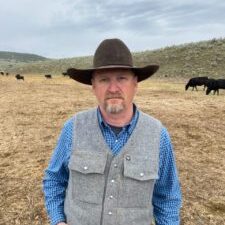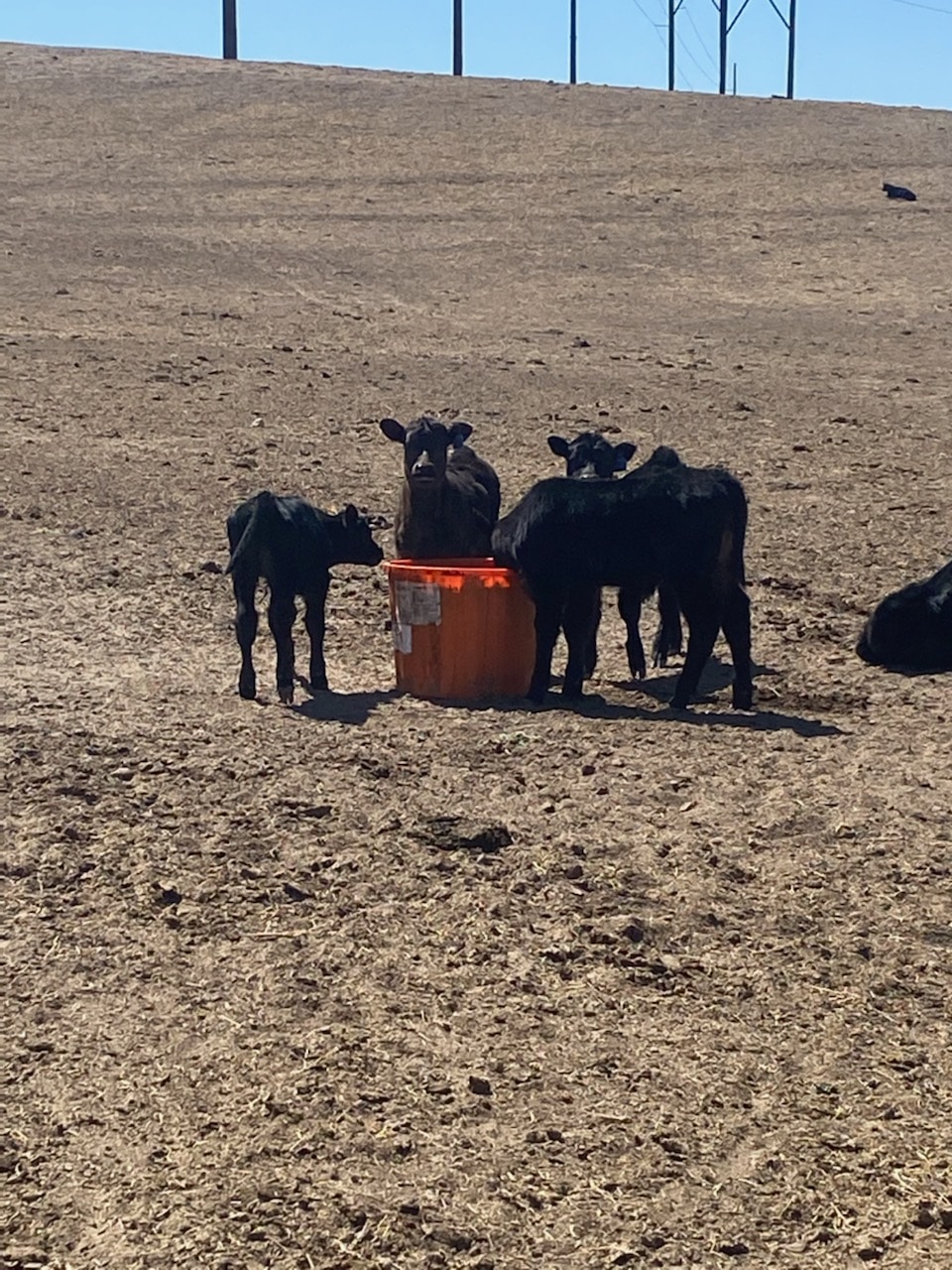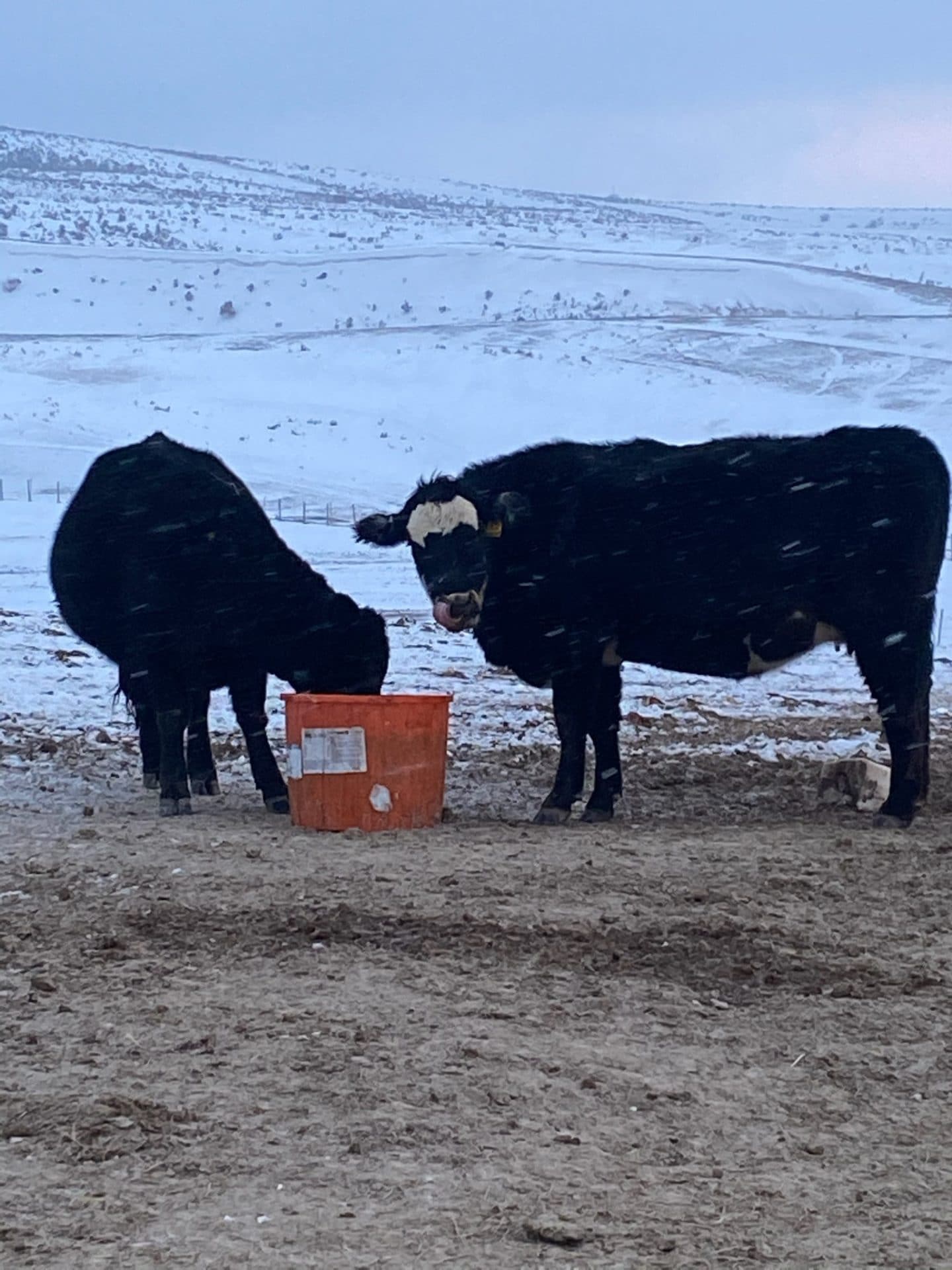Last updated on May 2nd, 2022 at 09:43 am
Keeping it natural with time-tested tradition.
Producing natural and NHTC cattle provides premiums.
Meet Matt Thompson

Shelley, Idaho
Tradition. Not only is it one of the iconic songs from the musical “Fiddler on the Roof,” but a major part of the ranching culture in the United States and Canada. After all, knowing where you came from is important in figuring out where you’re going.
Indeed, figuring out where you’re going has never been easy for ranchers; that’s especially true in today’s high-cost environment. It takes a blend of time-tested ranching traditions with agility and understanding to take advantage of every opportunity that ranching in a fast-paced, modern world offers.
That’s how Matt Thompson sees it. He’s a fourth-generation rancher in eastern Idaho, running 400 mama cows, plus replacements and bulls, on a commercial cow-calf outfit that his ancestors started in 1910. In fact, his ranching roots run even deeper than that. “They were ranching in Utah before they came to Idaho,” he says.
Those are deep roots to tap in to. Thompson respects that. But he has his eyes and his goals fixed firmly on the future, continuing to run a profitable operation that the fifth and sixth generations can carry on.
Added Value, Added Dollars
To that end, he’s a representative for Superior Livestock video auctions and a value-added beef producer, marketing natural and NHTC (non-hormone treated cattle) via Superior’s video auctions. As a Superior rep, he handles quite a few program cattle and sees the added value they bring to both buyer and seller.
A natural program essentially means the calves can’t receive any antibiotics or implants. If a calf needs to be doctored, it falls out of the program and must be marketed separately. NHTC cattle can receive antibiotics but can’t be implanted. So, cattle in a natural program can also sell as NHTC, but not the other way around.
Thompson uses a third-party verification service through IMI Global so buyers know his cattle are legitimately what he claims they are, although several verification services are available, he says. His calves are source and age verified, verified natural, NHTC, and Beef Care certified, and the ranch and its employees are BQA certified.
Finding the Demand
“If you have calves that are natural and black-hided, there are more than several people looking to buy those types of calves,” he says. “I average probably $100 a head over a conventional calf with no programs.”
What’s more, he says demand for program cattle is growing. “The difference between one that’s not program and that is, the premiums for the program cattle are growing all the time.”
Thompson’s cowherd is mostly Angus, some of which have a sprinkling of Hereford and he runs Angus bulls. So his calf crop is black and black-baldy. The cattle winter on the home place southeast of Idaho Falls and summer east of Idaho Falls on family ranches in the Bone, Idaho, area.
“We have quite a bit of ground that was in CRP that’s no longer in the CRP program that’s good dry grazing,” he says. ““We graze until it gets too cold to keep water running or the snow gets too deep,” then they bring the cows down to the home ranch and start feeding them. That happens in November and he’ll start feeding hay in mid-December. They’ll stay at the home place until mid-May, when they go to summer pasture in the foothills.
Quality Matters
“I’ve been buying good genetic bulls and trying to produce a product that somebody wants to buy.” That’s important not just when the video rolls, but when a consumer pushes the shopping cart up to the meat case.

Consumers have voted strongly with their dollars the past few tumultuous years, sending a signal to beef producers that they want top quality beef. So Thompson looks for bulls that can put carcass quality in his calves while maintaining the maternal characteristics he wants in his replacement heifers.
Thompson typically sells his calves in late July or August through Superior for fall delivery. He weans in October, then backgrounds the calves for 45 to 60 days before shipping in December. He feeds hay and some corn sileage in feed bunks and vaccinates the calves twice, which is part of Superior’s VAC-45 protocol.
Nutrition is Key in a Natural Program
Beyond the hay and sileage, the only other parts of the nutrition program are salt and Riomax® tubs.
“I think the Rio product is very beneficial in helping me keep the calves on the natural program,” he says. That’s because health and nutrition go hand in hand, or perhaps hoof in hoof. What’s more, minerals and vitamins are critical in enhancing the immune system so it can respond better to vaccinations and fight off disease challenges.

“I’ve seen a lot less sickness in my calves and a lot less need to doctor anything,” he says. “And they just look better to me, shinier and vigorous. They’re born and get right up,” he says of calving after the first year his cows were on Riomax® tubs.
Biting the Bullet.
“I’ve known about Rio for five or six years, probably, but I never could get myself to pull the trigger because of the upfront cost.” Drought cut his hay production and with high feed costs and reduced feed availability, he decided it was time to give the product a try.
“It actually saved me enough hay to pay for the tubs.” He typically feeds around 30 pounds of hay per cow in the winter. “I’m down to 20-22 pounds. And the cattle held up well and looked good,” he says, going into calving time. That's a 36% feed savings.
“I know it saved me 150 tons of hay over the winter that I didn’t have to put out, plus the time and wear and tear on equipment, the cost of diesel, all that stuff,” he says. “It saved me time, effort and expense.” Beyond saving on hay, he didn’t have to buy and put out additional mineral. “I’m way farther ahead to have the cattle on Rio—better breed-up and the cows are milking better. I think the calves are going to weigh more,” he says.
Thompson isn’t giving up on the traditions that make ranching special. But he’s not afraid to pull the trigger on technology that helps his bottom line. “I think people are going to need to get creative on how they go forward with the high feed and fuel prices that we’ve got,” he says. “Riomax® can be a big component in saving people some money.”



